Abstract
1. Subjects held their right arm in a horizontal plane. The angle of the elbow was 90 deg. They exerted forces in several directions in the plane of the arm, varying independently the pre-load torques about shoulder and elbow. We measured electromyographic (EMG) activity in several arm muscles in response to force perturbations which extended the shoulder, without changing the elbow angle. 2. The EMG activity in flexors of both shoulder and elbow showed reflex responses at short latency (approximately 25 ms). In all muscles the reflex activity increased with the pre-load activity of that muscle. 3. The short-latency reflex activity of m. brachialis, which was not stretched by the perturbations, was independent of the pre-load activity of the muscles acting over the shoulder. 4. From these results we conclude that the force resulting from the short-latency reflex, assessed from the EMGs, does not counteract the perturbations exactly. Having found that the short-latency reflex is dependent on the pre-load direction, we argue that this dependence makes the short-latency reflex suitable for correcting fast movements for misjudgements of load. 5. At longer latencies (greater than 50 ms) the direction of the force resulting from the reflex, assessed from the EMGs, was almost independent of the direction of the pre-load. In our experiment the force resulting from the long-latency reflex counteracted the perturbations quite well.
Full text
PDF
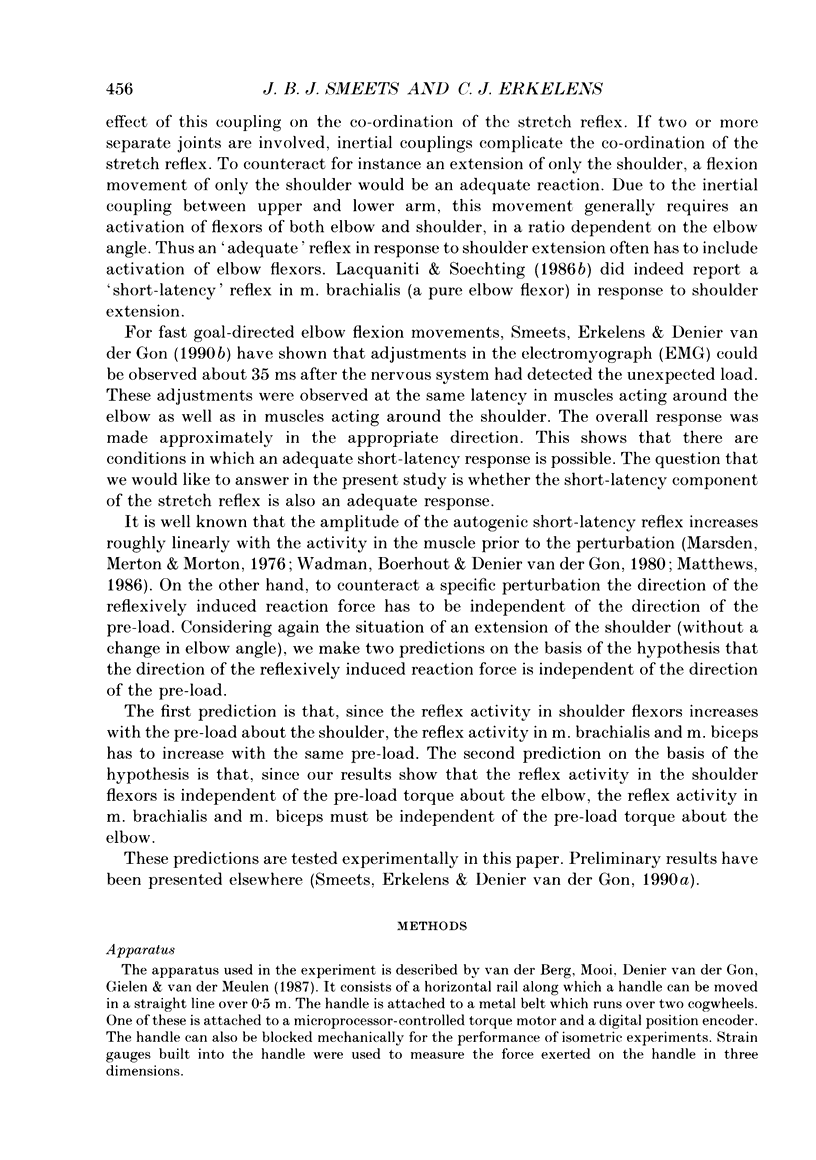

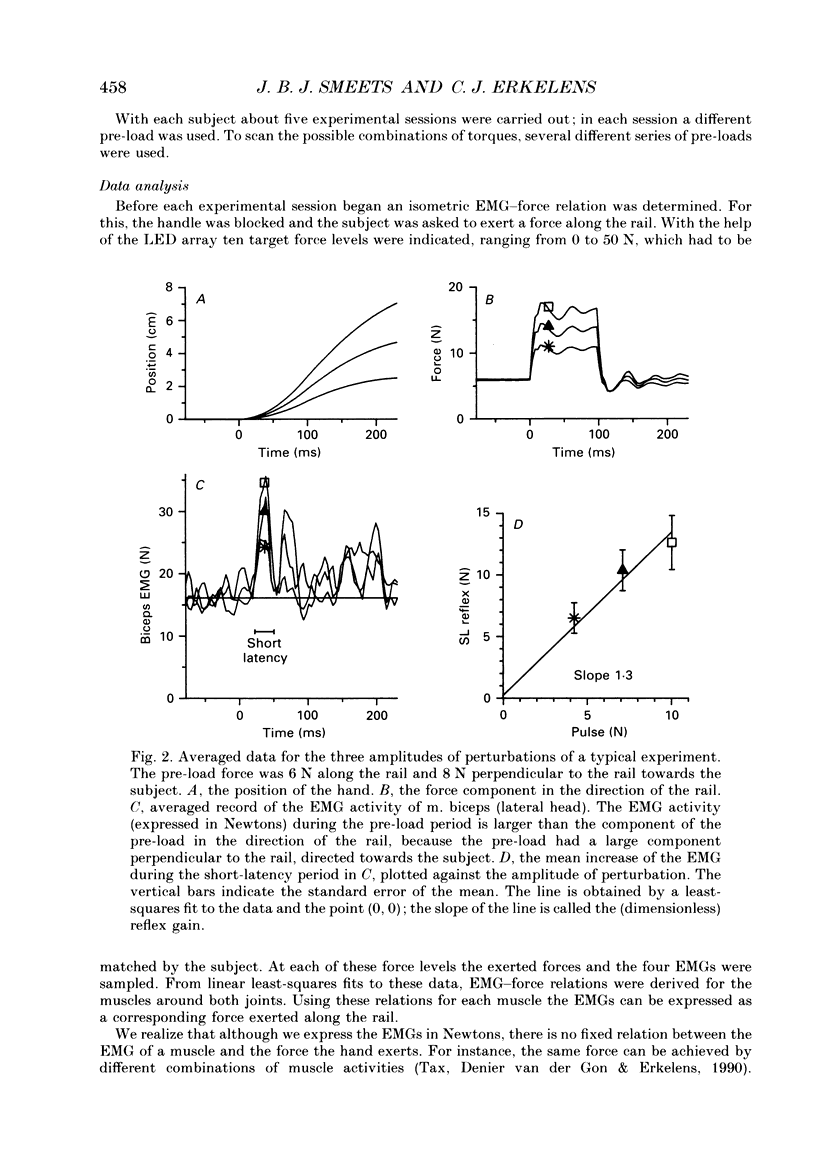
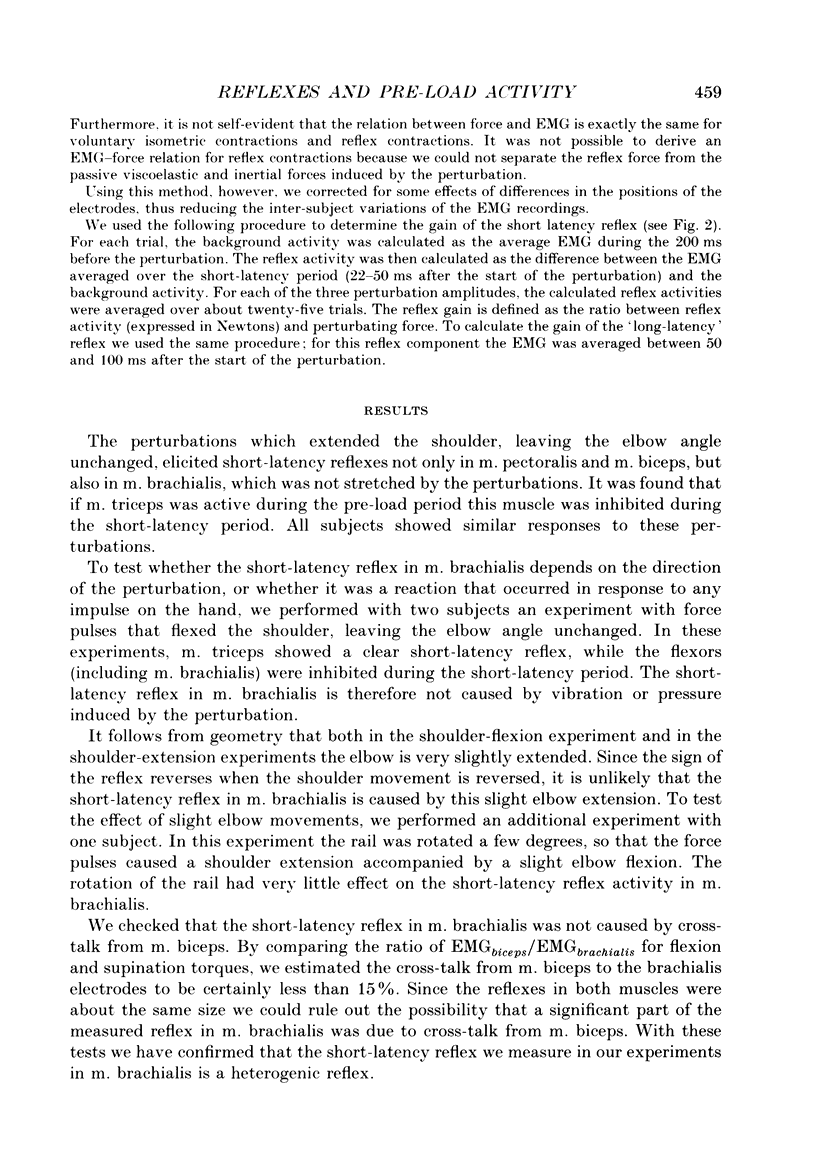
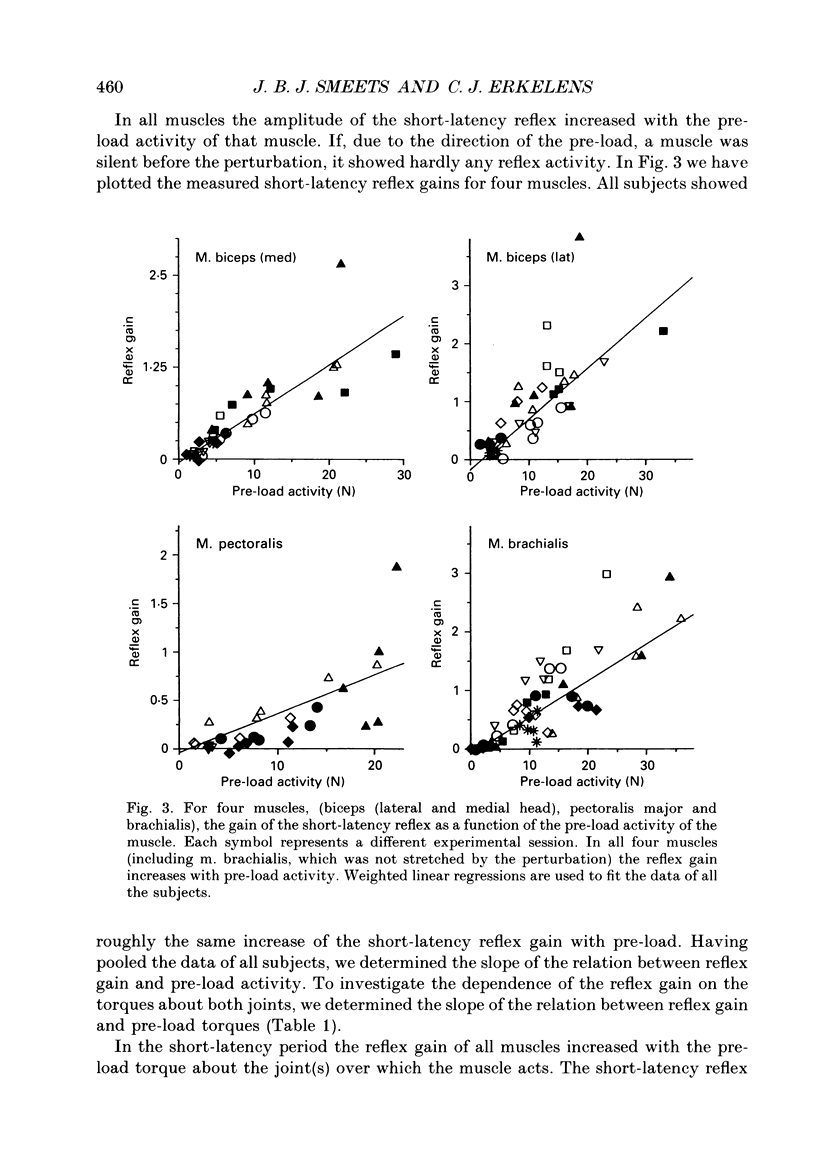
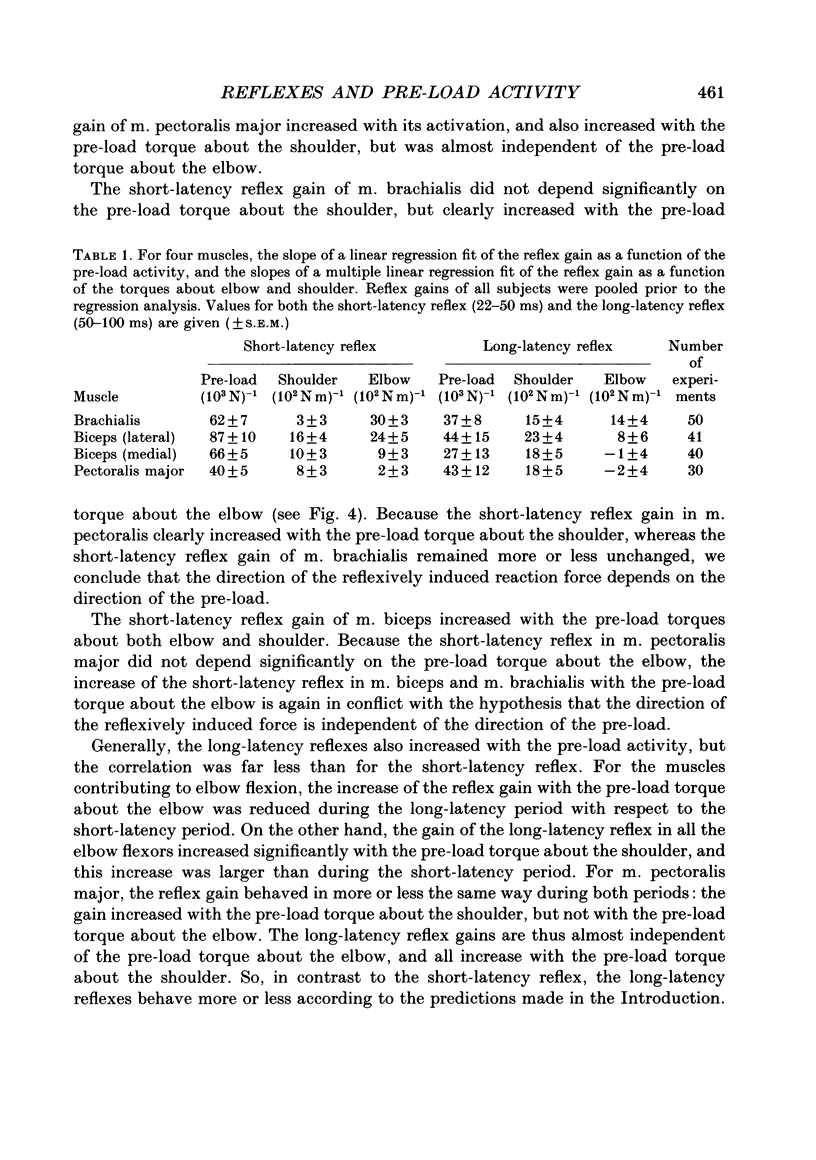

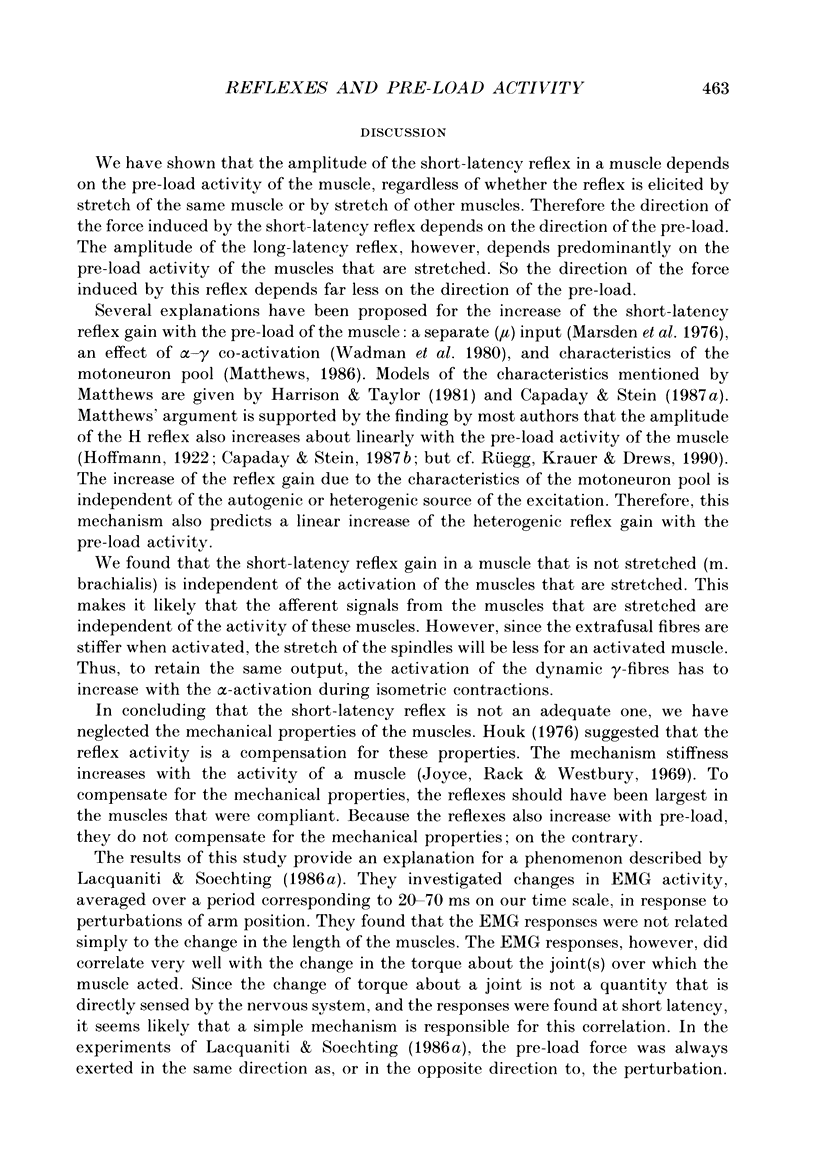
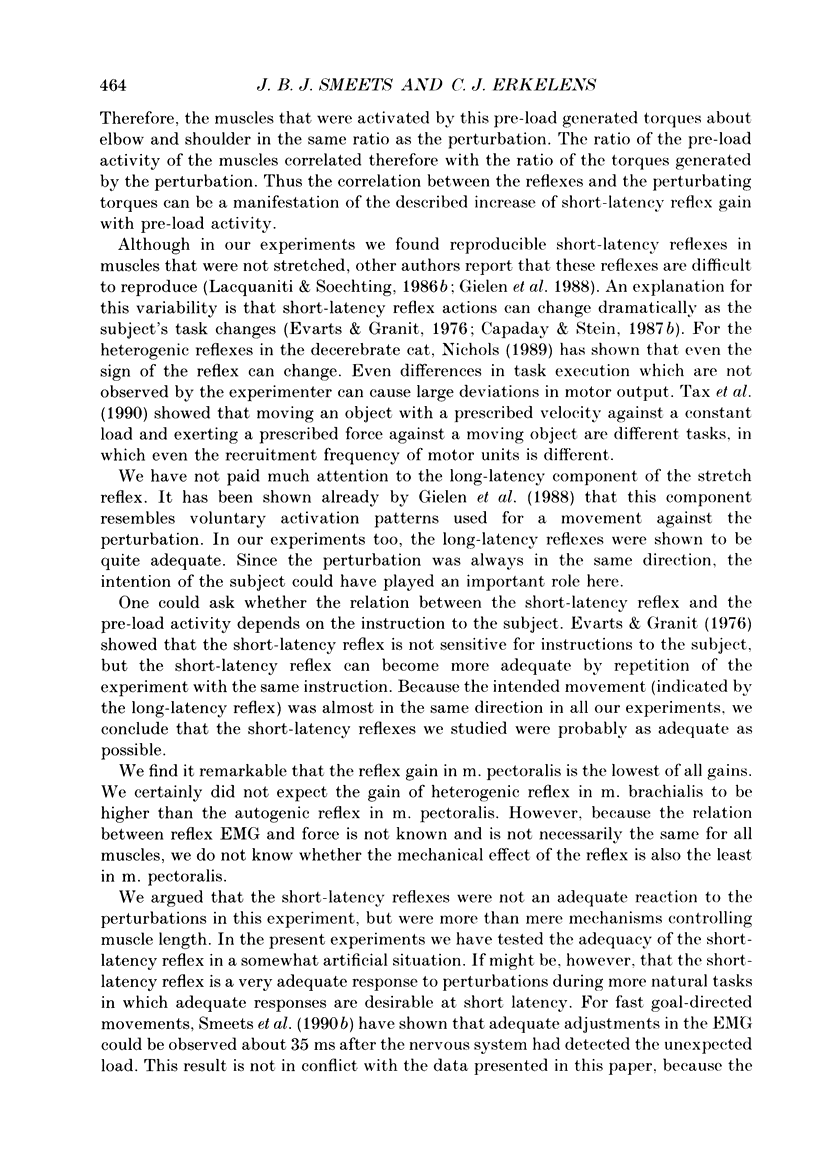
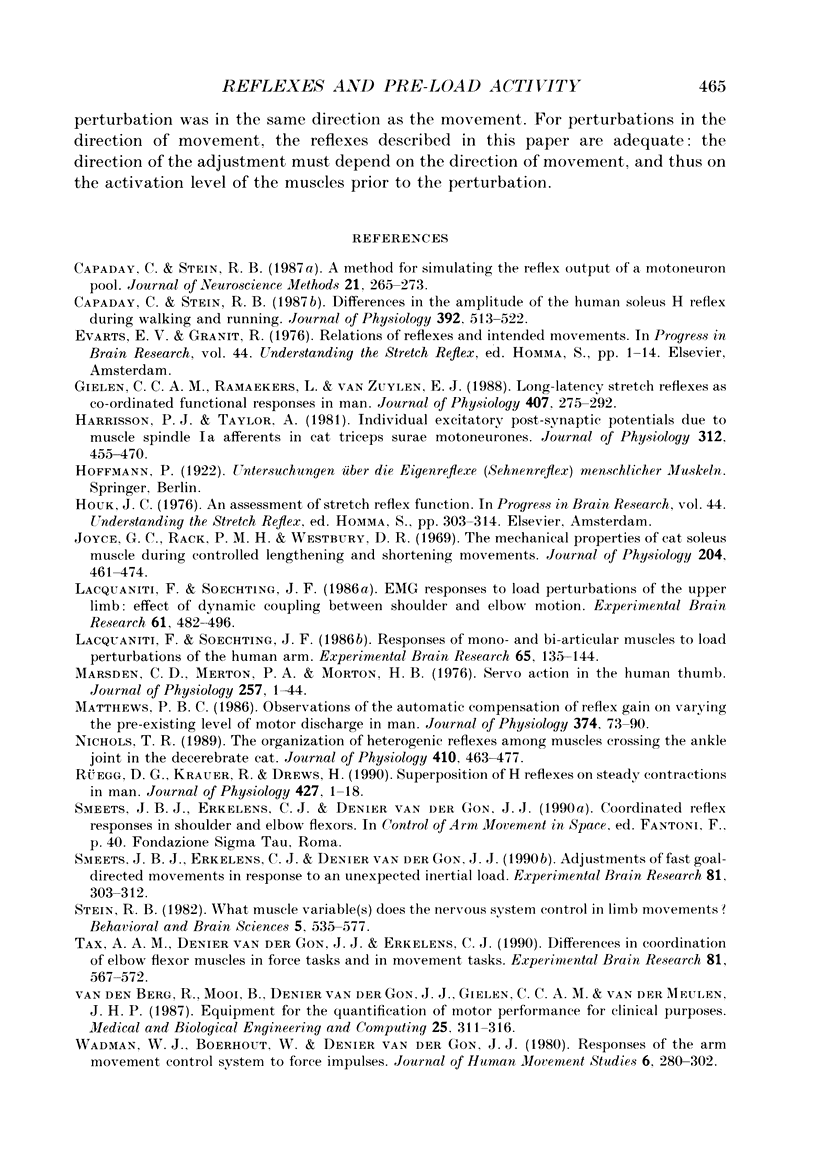
Images in this article
Selected References
These references are in PubMed. This may not be the complete list of references from this article.
- Capaday C., Stein R. B. Difference in the amplitude of the human soleus H reflex during walking and running. J Physiol. 1987 Nov;392:513–522. doi: 10.1113/jphysiol.1987.sp016794. [DOI] [PMC free article] [PubMed] [Google Scholar]
- Evarts E. V., Granit R. Relations of reflexes and intended movements. Prog Brain Res. 1976;44:1–14. doi: 10.1016/S0079-6123(08)60719-0. [DOI] [PubMed] [Google Scholar]
- Gielen C. C., Ramaekers L., van Zuylen E. J. Long-latency stretch reflexes as co-ordinated functional responses in man. J Physiol. 1988 Dec;407:275–292. doi: 10.1113/jphysiol.1988.sp017415. [DOI] [PMC free article] [PubMed] [Google Scholar]
- Harrison P. J., Taylor A. Individual excitatory post-synaptic potentials due to muscle spindle Ia afferents in cat triceps surae motoneurones. J Physiol. 1981 Mar;312:455–470. doi: 10.1113/jphysiol.1981.sp013638. [DOI] [PMC free article] [PubMed] [Google Scholar]
- Houk J. C. An assessment of stretch reflex function. Prog Brain Res. 1976;44:303–314. doi: 10.1016/S0079-6123(08)60741-4. [DOI] [PubMed] [Google Scholar]
- Joyce G. C., Rack P. M., Westbury D. R. The mechanical properties of cat soleus muscle during controlled lengthening and shortening movements. J Physiol. 1969 Oct;204(2):461–474. doi: 10.1113/jphysiol.1969.sp008924. [DOI] [PMC free article] [PubMed] [Google Scholar]
- Lacquaniti F., Soechting J. F. EMG responses to load perturbations of the upper limb: effect of dynamic coupling between shoulder and elbow motion. Exp Brain Res. 1986;61(3):482–496. doi: 10.1007/BF00237573. [DOI] [PubMed] [Google Scholar]
- Lacquaniti F., Soechting J. F. Responses of mono- and bi-articular muscles to load perturbations of the human arm. Exp Brain Res. 1986;65(1):135–144. doi: 10.1007/BF00243836. [DOI] [PubMed] [Google Scholar]
- Marsden C. D., Merton P. A., Morton H. B. Servo action in the human thumb. J Physiol. 1976 May;257(1):1–44. doi: 10.1113/jphysiol.1976.sp011354. [DOI] [PMC free article] [PubMed] [Google Scholar]
- Matthews P. B. Observations on the automatic compensation of reflex gain on varying the pre-existing level of motor discharge in man. J Physiol. 1986 May;374:73–90. doi: 10.1113/jphysiol.1986.sp016066. [DOI] [PMC free article] [PubMed] [Google Scholar]
- Nichols T. R. The organization of heterogenic reflexes among muscles crossing the ankle joint in the decerebrate cat. J Physiol. 1989 Mar;410:463–477. doi: 10.1113/jphysiol.1989.sp017544. [DOI] [PMC free article] [PubMed] [Google Scholar]
- Rüegg D. G., Krauer R., Drews H. Superposition of H reflexes on steady contractions in man. J Physiol. 1990 Aug;427:1–18. doi: 10.1113/jphysiol.1990.sp018157. [DOI] [PMC free article] [PubMed] [Google Scholar]
- Smeets J. B., Erkelens C. J., Denier van der Gon J. J. Adjustments of fast goal-directed movements in response to an unexpected inertial load. Exp Brain Res. 1990;81(2):303–312. doi: 10.1007/BF00228120. [DOI] [PubMed] [Google Scholar]
- Tax A. A., Denier van der Gon J. J., Erkelens C. J. Differences in coordination of elbow flexor muscles in force tasks and in movement tasks. Exp Brain Res. 1990;81(3):567–572. doi: 10.1007/BF02423505. [DOI] [PubMed] [Google Scholar]
- van den Berg R., Mooi B., Denier van der Gon J. J., Gielen C. C., van der Meulen J. H. Equipment for the quantification of motor performance for clinical purposes. Med Biol Eng Comput. 1987 May;25(3):311–316. doi: 10.1007/BF02447430. [DOI] [PubMed] [Google Scholar]



